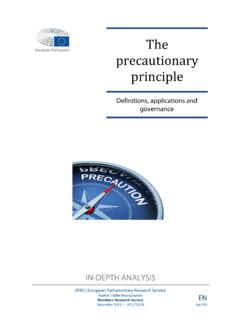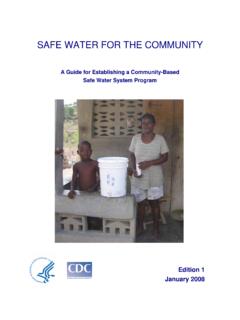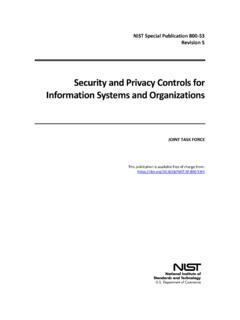Transcription of Impacts of minimum wages - GOV.UK
1 Impacts of minimum wages : review of the international evidence November 2019 Arindrajit Dube, University of Massachusetts Amherst National Bureau of Economic Research and IZA Institute of Labor Economics Impacts of minimum wages : review of the international evidence November 2019 Arindrajit Dube, University of Massachusetts Amherst, National Bureau of Economic Research and IZA Institute of Labor Economics Crown copyright 2019 This publication is licensed under the terms of the Open Government Licence except where otherwise stated. To view this licence, visit or write to the Information Policy Team, The National Archives, Kew, London TW9 4DU, or email: Where we have identified any third party copyright information you will need to obtain permission from the copyright holders concerned.
2 This publication is available at Any enquiries regarding this publication should be sent to us at ISBN 978-1-912809-89-9 PU2287 1 Contents Executive summary 2 Chapter 1 Introduction motivation for a minimum wage, and current policy context 6 Chapter 2 Who would be affected by a higher National Living Wage 11 Chapter 3 A framework for understanding the costs and benefits of minimum wages 19 Chapter 4 Evidence on minimum wage research: impact on incomes and employment 22 Chapter 5 Guidelines for considering more ambitious wage policies 53 Annex A Terms of reference 57 Annex B Bibliography 58 Annex C Acknowledgements 65 2 Executive summary In brief This report reviews the international evidence on the Impacts of minimum wages , as well as recent research documenting the impact of the National Living Wage (NLW) in the UK, to inform the UK government s decisions on the future remit of the Low Pay Commission (LPC) beyond 2020.
3 Overall the most up to date body of research from US, UK and other developed countries points to a very muted effect of minimum wages on employment, while significantly increasing the earnings of low paid workers. Importantly, this was found to be the case even for the most recent ambitious policies. Therefore, it concludes that, based on the overall weight of the available evidence, there is room for exploring a more ambitious NLW remit in the UK in the coming years, in the range of 60% to two-thirds of median hourly earnings. However, given that the evidence base is still developing, it would also be prudent to accompany more ambitious minimum wages with a clear mandate that the Low Pay Commission (LPC) can use to implement, evaluate and recalibrate any proposed changes to the NLW, thereby designing in responsiveness to any unforeseen Impacts if required.
4 To assist this, government should look to improve the evidence base and the quality of data used in assessing the impact of minimum wages . UK National Living Wage The UK NLW now stands at per hour, or of median hourly earnings in October 2019, with the government having a stated objective of raising this figure to 60% by 2020, subject to sustained economic growth. In 2018, the NLW covered close to 7% of UK workers aged 25 and over (excluding first-year apprentices). Women are more likely than men to be paid at the 2018 NLW, and more part-time workers earn the NLW relative to full-time workers. Coverage varies depending on the size of different economic sectors in a given region. Wholesale and retail trade, and accommodation and food services sectors account for the highest shares of workers affected by the NLW.
5 Evidence The potential benefits of minimum wage policy in terms of higher earnings for low paid workers, reduced public benefits, and increased perceived fairness should be 3 juxtaposed against the potential costs: reduced employment and hours for the low paid. There is good evidence that the labour market is not always characterised by a simple, perfectly competitive supply and demand framework. Rather, firms appear to have a degree of wage setting power. In an imperfectly competitive labour market, a higher minimum wage could reduce vacancies and turnover instead of destroying jobs. Of course, eventually a higher minimum wage will lower employment. Exactly how far one can push the minimum wage before job losses start becoming pronounced is an empirical question. In the US, a large body of high-quality research has investigated the impact of minimum wages on employment.
6 Overall, this body of evidence points to a relatively modest overall impact on low wage employment to date. Recent work helped identify how this impact may vary by the level of the minimum wage. Across US states, the best evidence suggests that the employment effects are small up to around 59% of the median wage. Evidence using sub-state county-level variation found this to hold even in lower wage counties where the minimum stood at up to 81% of the median wage. Research conducted for this report also finds that in the 7 US states with the highest minimum wage, where the minimum is binding for around 17% of the workforce, employment effects have been similarly modest. Not all US studies suggest small employment effects, and there are notable counter examples. However, the weight of the evidence suggests the employment effects are modest.
7 Moreover, recent research has helped reconcile some of the divergent findings. Much of this divergence concerns how different methods handle economic shocks that affected states differently in the 1980s and early 1990s, a period with relatively little state-level variation in minimum wages . When using data from the last 25 years (the period with most state-level minimum wage variation), different methodologies tend to be much more in accordance with each other. Moreover, when it comes to adult low-wage workers, the evidence is also more consistent cross methodologies. In the UK, research on the impact of the National minimum Wage (NMW) was reviewed extensively by a Low Pay Commission (LPC) report in 2016. The LPC concluded that in general there was little effect on employment but found some evidence that the NMW had led to small reductions in hours.
8 More recent research on the impact of the National Living Wage suggests that its introduction did not have a substantial negative effect on low wage employment (though one study finds some impact on part-time female workers, similar to findings for the NMW). Research conducted for this report comparing wage and employment changes across demographic and regional groups finds similarly small impact on employment and hours from the 2016 introduction of the NLW. The evidence of little impact on low wage employment is also consistent with recent research on minimum wages increases in Germany and Hungary. Small employment effects imply that firms adjusted to higher minimum wages in other ways. The evidence base on other margins of adjustment is much less well developed than the employment literature. However, there is clear evidence for 4 prices being an important margin of adjustment, as well as some more limited evidence of Impacts on profits and productivity.
9 Overall, existing research therefore points to a muted effect of minimum wages on employment, while suggesting that minimum wages significantly increase the earnings of low paid workers. Especially for the set of studies that consider broad groups of workers, the overall evidence base suggests an employment impact of close to zero. These ex post evaluations point to a much more modest impact on employment than often assumed in prospective simulation studies. However, the evidence base on the effects of high minimum wage levels is still developing. Careful consideration therefore needs to be given to the implementation of any ambitious future policy. Implementation A more ambitious minimum wage policy should be paired with clear guidelines for the LPC to recommend and evaluate changes in the National Living Wage.
10 In particular, there needs to be a clear mandate for the LPC to pause and reconsider if the evidence suggests significant losses in jobs for those affected by the policy. Since lowering the nominal NLW is highly unlikely for a variety of reasons, the main revision would occur through allowing inflation to erode the value of the NLW, were it to exceed the desirable target level based on the evidence. It is also important to improve the data infrastructure available to the LPC and academics to facilitate timely evaluation. To support evidence-based decision making, the government should: a) Consider how Annual Survey of Hours and Earnings (ASHE) data, one of the most common data sources currently used for minimum wage evaluations in the UK, can be available to the LPC further in advance of its decision making.













